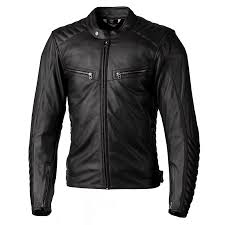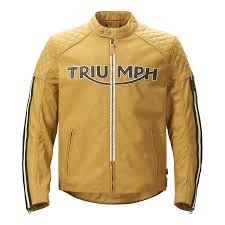
Summertime Motorcycle Gear: Stay Cool and Safe on the Road
Summertime Motorcycle Gear: Stay Cool and Safe on the Road
As the temperatures rise and the sun shines brighter, it’s important for motorcyclists to gear up appropriately for the summer season. Riding in hot weather can be challenging, but with the right summertime motorcycle gear, you can stay cool, comfortable, and safe on the road.
Ventilated Riding Jackets
Invest in a high-quality ventilated riding jacket made from breathable materials such as mesh fabric. These jackets provide airflow to keep you cool while still offering protection in case of a fall. Look for jackets with zippered vents that you can open or close as needed.
Lightweight Helmets
Opt for a lightweight helmet with good ventilation to prevent overheating during summer rides. Full-face helmets with adjustable vents are ideal for maximising airflow while still providing crucial head protection.
Moisture-Wicking Base Layers
Wear moisture-wicking base layers under your riding gear to help keep sweat away from your skin and maintain comfort throughout your journey. Look for base layers made from materials like polyester or merino wool that dry quickly and regulate body temperature.
Breathable Riding Gloves
Choose riding gloves with perforations or mesh panels to allow air circulation and prevent sweaty hands during hot weather rides. Ensure that your gloves still offer adequate grip and protection without compromising breathability.
Cooling Neck Wraps
Cooling neck wraps or bandanas can provide instant relief from heat while riding in the summer sun. Simply soak them in water before wearing them around your neck to enjoy a refreshing cooling effect as the water evaporates.
Ventilated Riding Boots
Select riding boots with ventilation features such as breathable lining or perforated panels to allow air to circulate around your feet and ankles. Comfortable and well-ventilated boots will help prevent overheating and discomfort on long summer rides.
By choosing the right summertime motorcycle gear, you can enjoy your rides in hot weather while staying cool, comfortable, and safe on the road. Remember to stay hydrated, take regular breaks, and ride responsibly to make the most of your summertime adventures on two wheels!
Top 7 Benefits of Summertime Motorcycle Gear: Stay Cool, Comfortable, and Safe on the Road
- 1. Provides airflow to keep you cool during hot rides.
- 2. Offers protection without compromising comfort.
- 3. Lightweight and breathable materials enhance overall riding experience.
- 4. Helps regulate body temperature to prevent overheating.
- 5. Improves safety by ensuring proper gear fit and functionality.
- 6. Reduces sweat and moisture buildup for increased comfort.
- 7. Enhances visibility with reflective elements for added safety in sunny conditions.
Challenges of Summertime Motorcycle Gear: Balancing Cost, Protection, and Comfort
- Some summertime motorcycle gear may be more expensive due to advanced cooling technologies.
- Ventilated riding jackets may offer less abrasion resistance compared to heavier, non-ventilated jackets.
- Lightweight helmets with extensive ventilation may compromise on noise reduction and wind protection.
- Moisture-wicking base layers may not provide sufficient insulation during cooler evenings or early mornings.
- Breathable riding gloves with mesh panels might offer less impact protection than solid construction gloves.
- Cooling neck wraps need to be regularly re-soaked in water to maintain their cooling effect on long rides.
1. Provides airflow to keep you cool during hot rides.
Summertime motorcycle gear offers a crucial benefit by providing airflow to keep riders cool and comfortable during hot rides. The ventilated design of gear such as riding jackets and helmets allows air to circulate, preventing overheating and ensuring a more enjoyable riding experience in warm weather. By promoting airflow, summertime motorcycle gear helps riders stay focused, alert, and at ease on the road, enhancing both comfort and safety during their journeys.
2. Offers protection without compromising comfort.
During the summer season, one significant advantage of summertime motorcycle gear is that it provides protection without compromising comfort. High-quality gear made from breathable materials ensures riders stay cool and comfortable while still offering essential protection in case of accidents or falls. This balance between protection and comfort allows motorcyclists to enjoy their rides with peace of mind, knowing that they are adequately safeguarded without feeling restricted or overheated in hot weather conditions.
3. Lightweight and breathable materials enhance overall riding experience.
During the summer season, the lightweight and breathable materials used in summertime motorcycle gear play a crucial role in enhancing the overall riding experience. These materials allow for better airflow, keeping riders cool and comfortable even in hot weather conditions. By wearing gear made from such materials, motorcyclists can focus on enjoying their ride without feeling weighed down or overheated. The breathability of these fabrics also helps in moisture-wicking, ensuring that riders stay dry and fresh throughout their journey. Ultimately, the use of lightweight and breathable materials in summertime motorcycle gear contributes to a more enjoyable and pleasant riding experience on the road.
4. Helps regulate body temperature to prevent overheating.
Summertime motorcycle gear plays a crucial role in helping regulate body temperature to prevent overheating while riding in hot weather. The use of breathable materials and strategic ventilation in gear such as jackets, helmets, and base layers allows for efficient airflow, keeping riders cool and comfortable even in high temperatures. By maintaining a balanced body temperature, motorcyclists can focus on the road ahead without the distraction of overheating, ensuring a safer and more enjoyable riding experience during the summer months.
5. Improves safety by ensuring proper gear fit and functionality.
During the summertime, motorcycle gear plays a crucial role in improving safety by ensuring proper fit and functionality. Well-fitted gear not only enhances comfort but also provides optimal protection in case of accidents. When gear fits correctly, it can effectively shield riders from injuries and abrasions. Additionally, functional gear with features like reinforced padding and impact-resistant materials adds an extra layer of safety on the road. Investing in high-quality summertime motorcycle gear that fits well and functions properly is essential for riders looking to enjoy their rides while prioritising safety.
6. Reduces sweat and moisture buildup for increased comfort.
Summertime motorcycle gear offers the benefit of reducing sweat and moisture buildup, leading to increased comfort for riders. By incorporating breathable materials and moisture-wicking properties, this gear helps regulate body temperature and keep riders dry even in hot weather conditions. With less sweat accumulation, riders can focus on the road ahead without distractions, ensuring a more enjoyable and comfortable riding experience during the summer months.
7. Enhances visibility with reflective elements for added safety in sunny conditions.
One significant advantage of summertime motorcycle gear is that it enhances visibility with reflective elements, providing added safety in sunny conditions. The inclusion of reflective materials in motorcycle gear helps increase visibility to other road users, especially in bright sunlight when glare can be a concern. By incorporating reflective elements into gear such as jackets, helmets, and gloves, motorcyclists can improve their visibility on the road, reducing the risk of accidents and enhancing overall safety during summer rides.
Some summertime motorcycle gear may be more expensive due to advanced cooling technologies.
During the summer season, one drawback of certain summertime motorcycle gear is its higher cost attributed to advanced cooling technologies. While these innovative features are designed to enhance comfort and safety by keeping riders cool in hot weather conditions, they often come with a premium price tag. Motorcyclists may need to weigh the benefits of investing in gear with advanced cooling capabilities against the additional expense involved. However, for those prioritising maximum comfort and performance during summer rides, the added cost of such gear may be justified for a more enjoyable and safer riding experience.
Ventilated riding jackets may offer less abrasion resistance compared to heavier, non-ventilated jackets.
During the summertime, one drawback of ventilated riding jackets is that they may provide less abrasion resistance when compared to heavier, non-ventilated jackets. While the breathability of ventilated jackets is ideal for keeping riders cool in hot weather, the trade-off is that the mesh or perforated materials used for ventilation may not offer the same level of protection against road abrasions in case of a fall. Riders should carefully consider this compromise and balance their need for airflow and comfort with the necessary level of safety and protection while choosing their motorcycle gear for summer rides.
Lightweight helmets with extensive ventilation may compromise on noise reduction and wind protection.
While lightweight helmets with extensive ventilation are great for keeping riders cool during hot summer rides, they do come with a downside. These helmets may compromise on noise reduction and wind protection due to the increased airflow. Riders who prioritize a quieter and more shielded riding experience may find that these helmets allow more wind noise and turbulence, which can be distracting and fatiguing during long journeys. It’s important for motorcyclists to strike a balance between comfort and protection when selecting their summertime motorcycle gear to ensure a safe and enjoyable riding experience.
Moisture-wicking base layers may not provide sufficient insulation during cooler evenings or early mornings.
While moisture-wicking base layers are excellent for keeping riders cool and dry in hot weather, they may not offer adequate insulation during cooler evenings or early mornings. As temperatures drop, riders may find themselves feeling chilly despite wearing these breathable base layers. It’s essential for motorcyclists to be aware of this con and consider layering up with additional thermal clothing or jackets to stay comfortable and warm when riding in varying weather conditions during the summer season.
Breathable riding gloves with mesh panels might offer less impact protection than solid construction gloves.
While breathable riding gloves with mesh panels provide excellent airflow and comfort during hot summer rides, one potential drawback is that they may offer less impact protection compared to gloves with a solid construction. The perforations and mesh panels that enhance breathability can sometimes compromise the overall structural integrity of the gloves, making them less effective at absorbing impact in the event of a fall or collision. Riders should carefully consider their priorities when choosing between breathability and impact protection to ensure they strike the right balance between comfort and safety on the road.
Cooling neck wraps need to be regularly re-soaked in water to maintain their cooling effect on long rides.
One drawback of using cooling neck wraps as part of your summertime motorcycle gear is the need to regularly re-soak them in water to sustain their cooling effect, especially during long rides. This maintenance requirement can be inconvenient and time-consuming, as riders may have to stop periodically to wet the wraps and ensure they continue to provide relief from the heat. Failure to regularly re-soak the neck wraps could result in a loss of their cooling properties, potentially leading to discomfort and reduced effectiveness in regulating body temperature while riding in hot weather.








